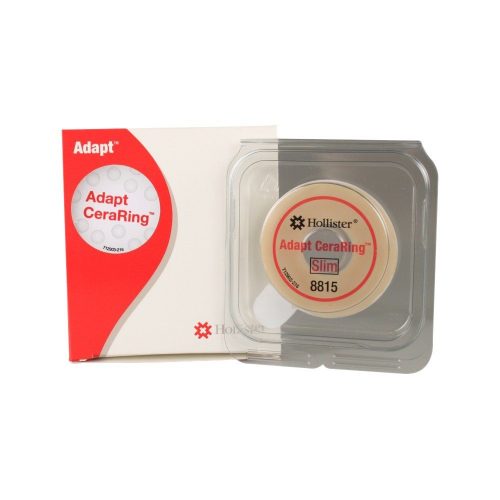FREE Shipping on Orders over $89 with Account – Create One Today!
- (844)-859-9400
- Get Help
Showing 1–16 of 39 results
















After a patient has a colostomy, bodily waste will pass through the stoma. However, both liquid and semi-liquid fluids have a high concentration of digestive enzymes, which can irritate the surrounding skin.
The stoma itself contains no nerve endings and won’t experience much sensation when this occurs. On the other hand, regular exposure to digestive enzymes can strip and wear away the skin surrounding the stoma. In turn, an ostomy ring or seal fitting the ostomy system’s barrier helps protect this area.
Stomas, on the other hand, can be found in several sizes and shapes. This means that not all solutions work for every patient.
Discover how ostomy seals and barrier rings can help get a better fit for your ostomy pouch.
Ostomy rings and seals are donut shaped and made out of a flexible hydrocolloid material that can be molded into a range of shapes to fit the barrier system. Once secured, the ostomy ring guards against moisture, including liquid and semi-liquid fluids. As well, the material’s adaptability better accommodates curved or contoured body shapes, can fit around retracted stomas and won’t further irritate damaged skin.
Ostomy pouches and wafers adhere best to flat, smooth, unbroken skin. But, the skin around a stoma may be irritated, wrinkly, creased or otherwise uneven. For this reason, ostomy seals and barrier rings may be a necessary accessory for your ostomy pouch. Whether you use a one-piece pouch or a two-piece ostomy system, an ostomy seal can create a better overall experience by filling in cervices for a better fit between your skin and the skin barrier. This can mean fewer leaks, less irritated peristomal skin and possibly longer wear time for your ostomy pouch.
Ostomy seals and rings come in many sizes and shapes, but they all fall into two basic categories: conformable and non-conformable. As the name suggests, conformable stoma seals are malleable, meaning you can bend, stretch and mold them to conform to the contours of your stoma. If the size and shape of your stoma is symmetrical, a round or oval ostomy seal or non-conformable washer may provide enough cushion and protection. But for irregular stoma shapes and peristomal areas that are irritated or uneven, conformable medical seals can be stacked or molded to fit.
Most conformable ostomy seals become extremely flexible when warmed between your hands. Some brands are infused with ceramide or other skin-loving ingredients to support healthier skin.
Colostomy barrier rings and other stoma seals are easier to apply than pastes or powders, especially for patients with limited vision or dexterity. Because stoma seals and barrier rings come in one piece that you can shape as needed, they eliminate the potential mess from tubes of paste. Stoma powder is only meant to dry up weepy or denuded skin, and skin barrier paste can be used like caulk to fill in gaps.
By contrast, these medical seals and barrier rings have adhesive qualities that help keep the wafer of your ostomy pouch in place while protecting against leakage. Browse round, oval and wrap barrier rings in sizes from one-inch diameter and up that are conformable or non-conformable, convex or flat from brands you trust.
Because ostomy rings and seals help create a moisture-impermeable seal between the barrier wafer and stoma, the ring should be applied before the barrier, or it should be secured to the barrier before it’s placed on the skin.
In both options, the skin surrounding the stoma should be cleaned and dried first. Next:
If applying the seal directly to the barrier, follow all steps as above, but before placing the ring on the skin, mold it to the barrier. You may need to separate it into smaller pieces or fill in uneven areas for a closer, more secure hold.